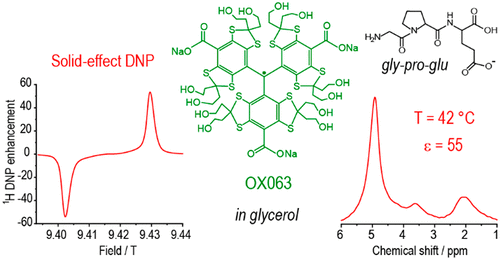В журнале Journal of the American Chemical Society (JACS), (IF 16,383) опубликована статья с участием сотрудников Института: к.х.н. О.Ю. Рогожниковой (снс, ЛМР), к.х.н. Д.В. Трухина (снс, ЛМР), к.х.н. В.М. Тормышева (снс, ЛМР) и д.ф.-м.н., проф. Е.Г. Багрянской (Директор НИОХ)
Solid-Effect Dynamic Nuclear Polarization in Viscous Liquids at 9.4 T Using Narrow-Line Polarizing Agents
Andrei A. Kuzhelev, Vasyl Denysenkov, Iram M. Ahmad, Olga Yu. Rogozhnikova, Dmitry V. Trukhin, Elena G. Bagryanskaya, Victor M. Tormyshev, Snorri Th. Sigurdsson and Thomas F. Prisner
J. Am. Chem. Soc. 2023, 145, 18, 10268–10274
Publication Date: April 27, 2023
doi: 10.1021/jacs.3c01358

Abstract
Dynamic nuclear polarization (DNP) is a hyperpolarization method that is widely used for increasing the sensitivity of nuclear magnetic resonance (NMR) experiments. DNP is efficient in solid-state and liquid-state NMR, but its implementation in the intermediate state, namely, viscous media, is still less explored. Here, we show that a 1H DNP enhancement of over 50 can be obtained in viscous liquids at a magnetic field of 9.4 T and a temperature of 315 K. This was accomplished by using narrow-line polarizing agents in glycerol, both the water-soluble α,γ-bisdiphenylen-β-phenylallyl (BDPA) and triarylmethyl radicals, and a microwave/RF double-resonance probehead. We observed DNP enhancements with a field profile indicative of the solid effect and investigated the influence of microwave power, temperature, and concentration on the 1H NMR results. To demonstrate potential applications of this new DNP approach for chemistry and biology, we show hyperpolarized 1H NMR spectra of tripeptides, triglycine, and glypromate, in glycerol-d8.
Альметрики:
Метрики PlumX теперь доступны в Scopus: узнайте, как другие ученые используют ваши исследования

